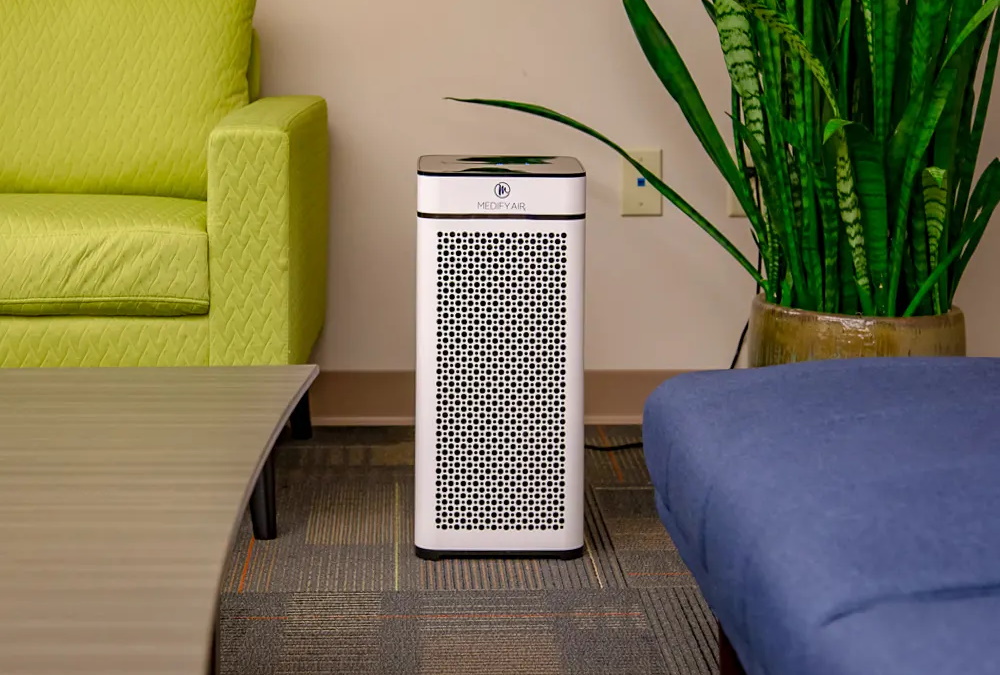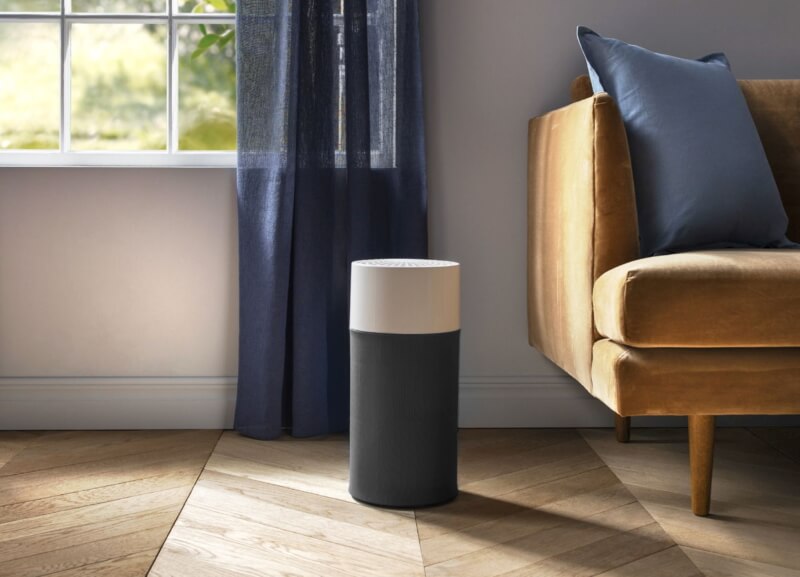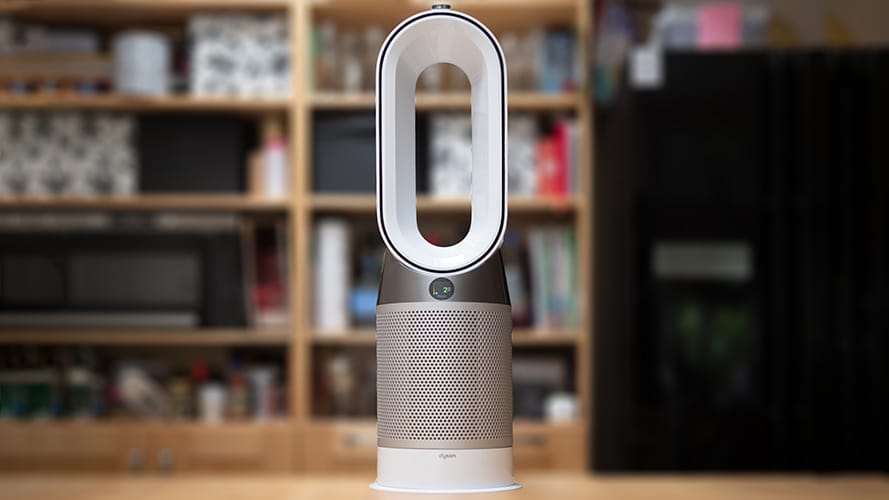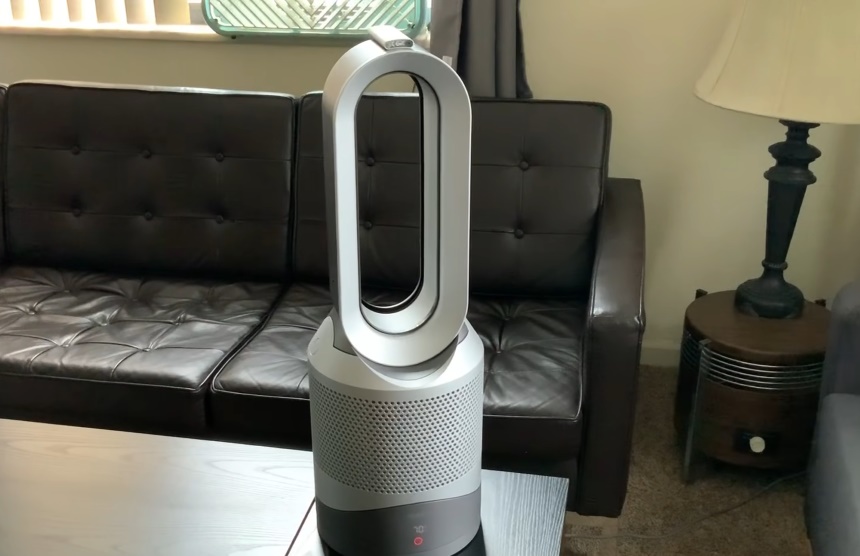

Behind your heavy-duty doors, far away from the center of the city, your home is probably your safe haven. While that’s true most times, your safety isn’t always guaranteed inside your home, especially if the air in it is polluted. Poor air quality is one of the major causes of breathing problems, but unfortunately, most people pay little attention to it. The truth is that whether your house is new or it’s been in existence for decades, it’s imperative for you to have one of the best home air quality test kits on the market handy.
Let’s face it, every home needs to have one of these kits. With one lying around the house, you can always monitor the quality of the air that you are breathing in. However, it goes without saying that the market has recently become saturated with these kits, which may make the selection a little difficult. To help you out here, we’ve reviewed as many as seven top-quality kits on the market, with each staking a claim to be the best. Overall, the model that came out on top is the Awair Element Indoor Air Quality Monitor.
It’s, however, important to note that our other picks are also brilliant performers, as each one has been painstakingly selected while considering important factors like type, measurement, and if the lab test is included. For the structure, we opted for the regular one you have become accustomed to, which comprises of an insightful comparison table, detailed product reviews, and a comprehensive buying guide.
More features: works with Alexa, Google Home, and more; walnut wood construction
If you’re looking for an air quality monitor that combines style with an excellent performance, then the Awair 2nd Edition Air Quality Monitor is your go-to option. With its compact construction and wood grain finish, this device looks excellent regardless of where it’s placed. However, apart from being stylish, it also performs brilliantly, features an elegant but simple display, and packs all the advanced features you would wish to see in a monitor. Uniquely, this device tests a great range of air quality parameters, such as TVOCs, CO2, PM 2.5, humidity and temperature.
It’s also great that the device displays every readout by utilizing a sophisticated dotted graphical style. Thus, it doesn’t only look great, but the large graph can also be seen easily from across the room. The unique Awair+ technology is one of the highlights here, as it, along with the inbuilt Wi-Fi, allows the device to seamlessly connect with your smartphone and other smart devices like Amazon Echo, Nest, Google Home, and others. This gives you control over many other devices as required. You can also integrate it with your smartphone, which is another great feature.
There is an easy-to-use Awair app, through which you can connect your smartphone and detect your air quality whenever you want and wherever you are. The application also provides tips on how to enhance your air quality. In fact, you can set up notifications that will allow you to make necessary adjustments at the proper time before air quality problems turn into a great concern. This puts you in total control of the air quality in your home, and by extension, your health. The only issue you may have is that Wi-Fi connectivity seems not to work sometimes.
More features: Wi-Fi capability; smart home integration
Regarded as the smartest air quality monitor in the world in some quarters, the IQAir AirVisual Pro is surely one of the best consumer air quality monitors on the market, if it’s not the best. Apart from sporting an incredible interface, this device also features great, premium-quality sensors. Besides, it boasts great wireless connectivity and offers probably the best application for air quality monitors. Its battery strength is, however, where you could have an issue with it as it lasts only 3.5 hours. This could pose a problem if you aren’t near any power source.
Moving on with the good features, the professional-grade sensors in the AirVisual Pro measure in real-time PM 2.5, CO2, temperature, and humidity. However, unlike other monitors out there, the AirVisual Pro doesn’t test for VOCs. We admit that this is bad news, but it shouldn’t be a dealbreaker as the device comes with other nice features to make up for it. It comes with an outstanding five-inch LED display, which is clear, bright, and sufficiently large to see from across the room. Apart from showing the results of your tests, it also displays health tips, battery life, Wi-Fi signal, humidity, temperature, time of the day, and more.
The device’s application is rated the number one air quality app as almost all the information that is shown on the device is also shown on the application. The device can also be connected with other smart devices since it an IFTTT applet to connect with smart home devices. In general, despite coming with some flaws, this device is one of the most outstanding air quality monitors around. Its exceptional interface, design, and features make up for any other thing it lacks.
More features: adjustable alarm for various HCHO levels
Despite being a relatively small device, the EG Air Air Quality Monitor is packed with amazing features. Since it can be used as either a standalone air monitor or a portable air monitor, this device is capable of accurately and easily detecting multiple compounds. It features a sophisticated filtration system that can get rid of accuracy-disrupting interferences. That said, the advanced sensor tech is the highlight of this device. The technology allows it to use both electrochemical and laser sensors to guarantee accurate results. On top of that, it comes with inbuilt fans to aid air circulation for better readings.
Furthermore, apart from the ability of this device to detect volatile organic compounds, PM 10, PM 2.5, humidity, and temperature, it can detect PM 1.0 and formaldehyde as well. The formaldehyde detection is really worth its weight in gold as formaldehyde has proven to cause serious illnesses like nasal cancer and lung cancer. Moreover, not many devices have better displays than this one. The colored LCD display makes readout clear and extremely easy to see.
While navigating the menu is a bit difficult, that shouldn’t pose a problem if you’re familiar with technical devices. For its power, this device gets its juice from a rechargeable battery that is rated to last for up to five hours. Not only that, but it can also be powered via a micro-USB cable for continuous use. The air quality monitor also comes with a free eBook on air and gas quality and a free 90-day Amazon technical support.
More features: first indication of your radon levels within 24 hours
The Airthings Corentium Home Radon Detector is arguably the best radon monitor you can find on the market. In fact, it is the first battery-operated, digital radon monitor, which allows you to keep a tab on the radon levels of your home without needing an outlet. Featuring an excellent LCD display, this device allows you to see both short and long-term levels, which will subsequently allow you to make the right adjustments for your home.
Furthermore, this device is resistant to an extensive variety of physical and environmental conditions, which include dust, weather, electromagnetic interference, and others. Of course, that’s down to its durable construction, which also protects it from knocks and drops. In terms of ease of use, the air quality monitor is second to none, sporting a simple design and a bright LCD display, as we already noted. The neat LCD display also allows for simple result interpretations as you can clearly see the results of the device’s tests.
Lest we forget, this device is completely unique in how it quickly gives you your test results. It enables you to see the first indication of the radon levels of your home in 24 hours, so you don’t need to send anything to a lab. And if you want to test the radon levels in other rooms, you only need to reset the device. The device is also portable and comes with a longer battery life as it uses three AAA batteries. While the device is quite costly, everything it offers in return makes it worth the price.
More features: comes with a reusable air sampling pump, 3 indoor air sample cassettes and 1 outside air sample cassette
The My Mold Detective MMD103 Mold Test kit is an advanced, accurate test kit that is designed to test for dozens of growing mold and volatile organic compounds that may be residing in the air of your home. While it’s nothing compared to top-of-the-line picks like the Awair 2nd Edition Air Quality Monitor, we can’t deny that it’s also effective. First of all, the kit is very easy and fast to use. In fact, the test takes only five minutes, which is remarkable.
Not only is the kit fast, but it also gives you accurate results. And apart from being fast and accurate, the machine is also very easy to use, as long as you read all the included instructions. Besides, there is no need for you to be worried about leaving the device on for too long as it comes with an inbuilt timer that runs at only five minutes. Of course, the built-in timer is a feature that aids ease of use as well, which further corroborates our claims about the user-friendliness of this device.
Sometimes, companies refuse to list all the likely additional fees, but this manufacturer is upfront. When you register your sample, you will have to pay lab fees. While the fees are fairly affordable, it’s still something you need to take into consideration. Whether you have a rented apartment or your own home, this product can provide a lot of benefits. The big drawback to it is probably the fact that it doesn’t test for a wide range of pollutants.
More features: in 5 business days you’ll receive an email with your results
The Home Air Check Indoor Air Quality Test is another air quality test kit that will help you monitor the quality of the air you’re breathing in in your abode. While this device is particularly made for monitoring formaldehyde, it can also detect off-gassing of laminate glues and numerous other sources. While this is a single-use quality test kit, it can be used at different places, such as your car, mobile home, garage, house, office, and many more. While its basic operation may not appeal to some buyers who are keen on seeing an advanced system, its ease of use will attract people who like simplicity.
The instructions are clear and well-written, which makes the test super-easy to conduct as soon as you’re done with the test, you can send your samples to a lab for thorough analysis. Expectedly, the results often come back in the form of an email. While it usually takes up to two weeks for your samples to be processed and your results sent to you, it may take more than one month sometimes, which can be a bit frustrating. The good news is that the cost already includes the lab analysis, plus it’s usually accurate.
It’s important to know that it’s almost a compulsion for you to know the size of the place you want to test. If the space is up to 2,000 square feet, then one test should be sufficient. You will need to order two tests, however, if you have a small house with a basement or a three to four-bedroom apartment. For anything larger than that, then you will require three tests.
More features: contains 3 tape lift samples (surface tests)
The Mold Inspection Network DIY Mold Test is an excellent inspecting and sampling kit that is specially designed for mold testing. Everyone knows that mold is dirty, stinky, and dangerous, so it’s important to have something like this on hand to combat it. You don’t need to have deep pockets to be able to afford this as it’s reasonably priced. Apart from that, it provides accurate results and will let you know what you are dealing with through the lab analysis. On top of that, the company’s expert consultants are available to guide you on how to use the test results.
The package contains three home test kits, which you can use to detect mold in multiple areas in your home or more than one time. However, the three strips can only be used one time each, which many users may not like. Of course, using this kit is better than asking a professional to come and measure the mold level in your home since it’s more affordable despite being as efficient and precise. Also, the package’s initial costs already include expert consultation and lab analysis costs.
However, the kit is quite time-sensitive, which means it must be used by the date on the package. If you have experienced water damage from flooding recently, then this kit can give you some peace of mind. However, it only tests for molds, so it may not be the ideal option for people who are looking for a kit to detect a wide range of air pollutants.
Most people who research about home air quality test kits nowadays are usually first-time buyers, which indicates that reviews only may not be enough to help them choose the right products for their needs. Thus, we have put this enlightening guide together, to equip prospective buyers with all the knowledge they need to make a purchase.
There are a lot of easy methods to quickly improve the air quality of your home, with one of the best ones being to prevent air quality from becoming an issue in the first place. The preventative measures comprise of AC maintenance and regular inspection, ventilation system maintenance, and living in a good location.
Cleaning of AC units and routine inspection have to be carried out once or twice annually at least. This can be done by a homeowner or a professional. Maintenance and cleaning include vacuuming the internal parts of the AC unit or vacuuming its blowers if it’s a window unit. You will also need to clean the coils of the AC unit since they often collect dirt and debris.
Additionally, the condensate drains need to be cleaned and inspected when necessary. Accumulation in the drain usually causes a rise in humidity, which can cause the development of mildew and mold. You can combat this by trimming away grass or plants that get too near the air conditioning unit. In general, this means you need to trim back everything that’s within a two-foot radius around your AC unit. apart from reducing potential air pollutants, this will also make the AC unit more efficient.

Look for visible accumulation and see the air come out. Debris accumulation around the register or debris coming from the ventilation system could be an indication of bigger problems. If you find visible signs after this preliminary check-up, try unscrewing the register and use a flashlight to look into the duct. As an alternative, you can use a flash camera to take a picture for the examination of the duct.
Check for excessive animal droppings, mold, debris, and other types of accumulation inside the duct. If you find a large accumulation, you may need to call a professional. If the build-up or debris is minimal, though, you can use a vacuum to clean it by yourself. Besides, look at the furnace to ensure the filter doesn’t need to be changed. Generally, furnace filters have to be changed every three months. If upon examination, however, you find a noticeable layer of dirt or dust in the filter, it will have to be changed.
As a safety measure, examine the filter once every month to have an idea of the speed at which it’s getting dirty. You can also care for the furnace by cleaning the fan, heat exchange, and pilot light. When cleaning the furnace, a vacuum with a long attachment ought to be enough. Besides, check the duct seals and seal the cracks with duct tape. These will make sure the furnace works properly and remains at optimum efficiency.
You also need to take a look at the air quality guide so that you would know if air pollution is an issue in your region. If air pollution is a big issue around your home, then you probably need to think about moving. However, a less severe solution may be more suitable if the air pollution around your home is of slight to modest concern. Examples of such less severe solutions include buying a home air purifier or cleaning your home, furnace, ventilation system, and AC unit more frequently.
One of the most effective ways of combating poor air quality in your home is purchasing a home air purifier. According to numerous studies and researches, the use of home air purifiers actually lessens the risk of cancer from excessive exposure to VOCs.
When choosing a home air quality test kits, reading the reviews of the best products may be insufficient if you don’t know the features and factors that actually separate these models. To help you on that front, we have put together some of the most important features you need to take into consideration when buying a home air quality test.

The first consideration you need to make is if you want a DIY kit or an actual electronic device. Of course, these are the two most popular types of home air quality test kits, and choosing between them may be down to some factors. Personally, we feel electronic devices are much better options since they give you instant results and are a lot easier to use as you don’t need to send any results to any lab. However, they are usually much more expensive than the DIY kits, so your pocket may also have a say in this.
As you probably know already, different home air quality test kits tests for different air pollutants, so you must remember this as you filter through the different options on the market. While some kits are designed to only test for formaldehyde or mold, some models like the Awair Element Indoor Air Quality Monitor are built to test for all types of air pollutants, which include TVOCs, CO2, PM 2.5, humidity and temperature.
You’ve also got to consider the power source as well, if you are choosing an electronic home air quality monitor. While most electronic devices used to be designed to be powered only when plugged to an outlet, things have changed, and more models are being battery-powered as well in recent days. Your decision will depend on how you want to be using the air quality monitor, of course.
If you are likely to be leaving it at home at all times, then you may be better off with a model that can only be plugged to a power outlet. If you intend to be taking it with you on trips, however, then a battery-powered model will be more suitable for you.
Since you can’t interpret the results you get from DIY kits yourself, then you need to send your results to accredited laboratories for testing. They would then send the results to you after a given period of time. However, the issue here is that some models don’t include lab test fees in their initial costs, so would have to pay a separate fee for the test. If you are not fine with this arrangement, then you need to choose a model whose initial costs already include the lab fees, such as the Home Air Check Indoor Air Quality Test and the Mold Inspection Network DIY Mold Test.
Other features you may need to look for include Alexa/Google Home compatibility, the number of tests included in the pack, the design, the ease of use, and more. While these extra features are usually convenience-aiding features, they usually don’t have any impact on the operation of the device. Besides, the more they are on a device, the more expensive the device will be. If you have deep pockets, you may look for them. If you are on a limited budget, however, you may be better off without these features, to be honest.

One of the most unwise things anything can ever do is buying a product that has no sort of warranty whatsoever, especially if it’s an electronic device. Just like every other thing that is man-made, air quality test kits are also vulnerable to faults and manufacturing defects, so you need to make sure the model you are buying is at least covered in case anything goes wrong. And as we have seen many times in the past, things usually go wrong with electronic devices, whether they are new or not.
A lot of people usually don’t pay much attention to the quality of the air they inhale or the implications of the air on their health. While many people know how harmful air pollution can be, most believe air pollution only affects outdoor air. Like the air you inhale outdoors, indoor air quality can also have a big impact. Below are the benefits of having good air quality in your home.
Improved Breathing – If you have good indoor air quality, the body will receive higher amount of oxygen with every breath, and the air will have lower quantity of air contaminants. These factors can improve breathing, thereby putting less strain on your heart, lungs, and every part of the body. Getting exposed to fewer air pollutants can result in improved breathing, which can subsequently make the inhabitants of a building to feel more energetic. It can also help in the prevention of respiratory problems later.
Better Sleep Quality – Breathing rates usually change all through the sleep cycle, which means home air quality is as vital while sleeping as it is while awake. Reduced oxygen percentages and VOCs in the air can disrupt sleep cycles and impact your sleep quality negatively. Meanwhile, good air quality is capable of promoting a pleasant sleep and can protect against the rise of sleep-related conditions like sleep apnea.
Better Moisture Control – Good moisture control is capable of preventing the development of bacteria and mold and up your comfort levels. Dry air can result in nosebleed and skin irritation, while moist air can lead to extreme stuffiness and is capable of damaging home structures and furnishings. The appropriate home relative humidity is between 45 percent and 55 percent, but this may differ between the times in various regions.
Decrease of Allergens – Most people usually have allergic reactions to allergens, which can include coughing, irritated eyes, sneezing, congestion, and other physical issues. Common allergens that usually reside in indoor air are dust mites, dust, mold spores, pollen, cockroach debris, and animal dander. Having an effective system to guarantee good air quality in your home will lessen the number of airborne allergens, which helps to lessen allergy symptoms for the inhabitants of a house.
Reduced Energy Expenses – When you take proper steps to enhance the air quality of your home, the strain on the air conditioning and heat units of the home will be certainly reduced. Since these units don’t need to work as hard to be effective, less energy is expended, and that will result in longer lives for the unit. Both in the short and long terms, this can save homeowners some money.
While style doesn’t really matter as long as a device offers an excellent performance, the Awair Element Indoor Air Quality Monitor gives you “style” anyways. Regardless of how good of a critic you are, you will have a hard time trying to fault this little device from Awair. Good-looking, durable, and efficient, it is the best home air quality test kit on the market currently.
Our second and third placed products are the IQAir AirVisual Pro and the EG Air Air Quality Monitor respectively, both of which are electronic air quality monitors. With all the smart features packed into both devices, both of them can rightfully stake claims as the smartest home air quality test monitors in the world.





